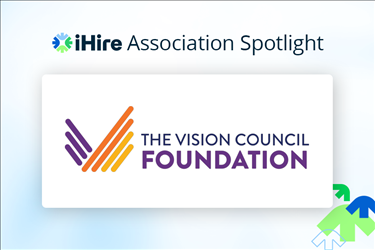- Job Seeker Resources
- |
- Last Updated: February 07, 2023

Nursing & Electronic Charting
In the past two decades, a revolution has been taking place in healthcare. The documentation required to maintain quality healthcare services is undergoing a transition from paper charts to a secure electronic system accessible via the internet. Nurses have found themselves at the center of this tumultuous shift, and many have not shied away from touting the advantages or highlighting the drawbacks of electronic medical records (EMRs) and electronic health records (EHRs). Regardless of which side of the debate an individual finds himself or herself, one thing is certain: EMRs/EHRs are here to stay.
History of Medical Recordkeeping & the Introduction of EMR/EHR
The practice of tracking a patient’s medical history and keeping a written record of their symptoms/illnesses goes at least as far back as the seventeenth century, growing out of the close link between medicine and astrology. In those days, a practitioner’s notes ranged from basic lists of client names, payment methods, and/or outstanding bills to more detailed histories covering a patient’s complexion, pulse, or bathroom habits. However, the gathering of effective cures (close to modern case histories) stretches all the way back to ancient Egypt and Greece (although this technique was lost in Europe for hundreds of years, physicians in the medieval Islamic world continued its use).
The predecessor of modern medical records first appeared in Paris and Berlin in the early nineteenth century; soon thereafter clinical records were implemented in American teaching hospitals. The twentieth century saw the advent of a recordkeeping system useful for direct patient care in hospital and ambulatory settings, which subsequently led to the introduction of electronic systems to handle this information. EMRs contain standard clinical data gathered by a single provider while EHRs include a more comprehensive patient history. It wasn’t until the twenty-first century that EMRs/EHRs achieved widespread use. In fact, the use of these programs by physicians grew from 18% in 2001 to 57% in 2011.
Find your next great opportunity. Register with iHire.
Benefits
The primary benefits of EMRs/EHRs are the elimination of paper files and significant increase in accuracy. In addition to reducing paperwork and streamlining the charting process, the use of EMRs/EHRs promises to contribute to the overall improvement of healthcare by strengthening coordination between providers, ensuring that fewer unnecessary or duplicate tests are performed, and allowing patients to have greater control over their health. EMRs/EHRs also work in conjunction with other tools and resources such as computerized physician order entry (CPOE), which allows a medical practitioner to enter their treatment instructions into an electronic system, and electronic medical administration records (eMARs), which track the time and date of medication administration (often in concert with barcode technology).
The most valuable aspect of EMRs/EHRs is the ability to have a patient’s entire medical history at the push of a button – allergies, previous diagnoses/treatments, and other key information will be immediately available and will not rely on the patient to remember or have the capacity to communicate these details. Furthermore, this information will now be readily accessible if the patient in question must go to a different care facility down the street, in another town, or across the country.
Disadvantages
A major change such as the introduction of EMRs/EHRs will not be without some problems, and for all the progress EMR/EHR systems have provided in terms of the legibility/clarity of patient care orders, there are also significant disadvantages. The biggest criticism is the effect electronic recordkeeping has on communication due to inconsistent methods of accessing information in the various systems.
According to a survey of 13,650 nurses conducted by Black Book in 2014, 90% felt the EHR their hospital implemented had a negative impact on communication between nurses and patients while 94% commented that the system hurt communication between nurses and other clinical personnel such as doctors and pharmacists. Part of the problem here may be the additional time it takes to handle documentation in an EMR/EHR system. An informal survey conducted by Medscape found that 72% of respondents admitted having to stay after their shifts had ended to finish charting.
Another major problem identified in the Black Book survey was a lack of IT resources, with 91% of nurses in for-profit facilities saying they had trouble finding an available EHR workstation during their shift. Also, less than a third of these professionals reported receiving a prompt response from the IT departments at their facilities to troubleshoot issues or resolve system vulnerabilities. Even more alarming, nearly 70% of nurses surveyed were told at one point or another to use workarounds with their facility’s faulty EHR system.
What’s Next?
It’s clear that EMRs/EHRs are the future of medical recordkeeping, but significant areas of improvement in implementation and usage still exist. Ongoing feedback from nurses will result in more effective methods of deployment that enhance communication while delivering the accurate information these systems promise. Without a doubt, the portability of medical records is a giant leap forward, but this technological advance in healthcare shouldn’t come at the price of hands-on treatment and interaction with patients or valuable collaboration with colleagues.

Originally Published: August 20, 2015
Sign In or Register to access all articles and insider tips for help in your job search.
Search for iHire Jobs
RELATED JOBS
Job Description: Licensed Practical Nurse Contingent - Day Shift (7a-7p) Gahanna, OH Assisted...
CaregiverCaregiver Overview Recognized by Newsweek in 2024 and 2025 as one of America's Greatest...
RN Hospice House/IPU - PRNWhat you should know about the RN Hospice House/IPU role: This is a PRN role floating between...
Registered Nurse (RN), Ohio Regional Support NurseOur Company Gentiva Hospice is a member of the Gentiva family - an industry leader in hospice,...
Senior Patient Care Manager, RN - Full Time (Hospice)Our Company Gentiva Hospice is a member of the Gentiva family - an industry leader in hospice,...
RELATED RESOURCES
Find the Right Job Faster
- Get personalized job matches sent to your inbox every day
- Connect directly with employers before your competition
- Advance your career with expert advice on interviewing, salary negotiation, and more
We value your privacy




